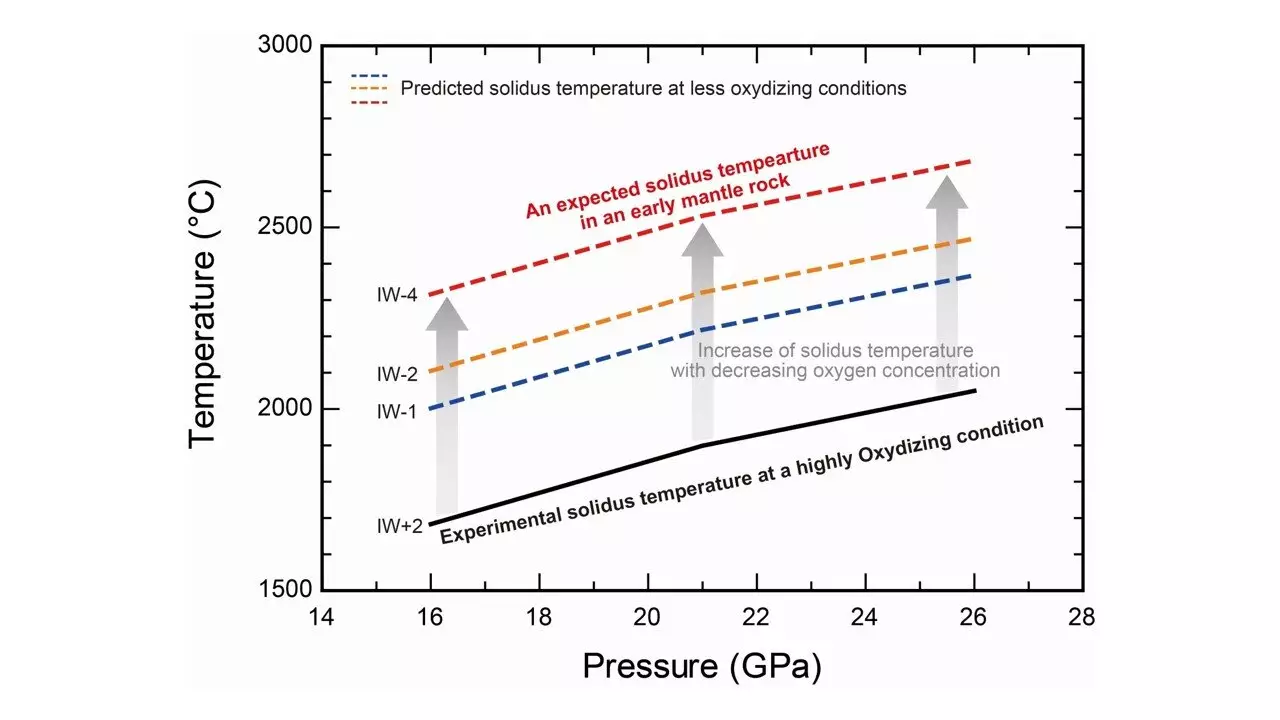Understanding the genesis of Earth’s early environment is foundational for grasping not only our planet’s history but also the evolution of rocky celestial bodies in the universe. A significant part of this understanding revolves around the concept of the magma ocean—an extensive body of molten rock that enveloped early Earth. This article delves into the pivotal role of oxygen fugacity in magma ocean dynamics, how recent scientific studies reshape our comprehension of Earth’s formative years, and the implications for broader planetary science.
The early Earth was characterized by extreme conditions, predominantly a global ocean of molten magma. As the planet formed, accretionary impacts from various smaller celestial bodies generated intense heat, contributing to this molten phase. Historically, models attempting to explain the formation of this magma ocean often relied on limited experimental data regarding the melting temperatures of deep mantle rocks. These temperature estimations have a direct bearing on our understanding of the conditions present during Earth’s early stages and the formation of its core.
However, discrepancies in these estimates have surfaced in recent years. Previous models did not account for the discovery that melting temperatures could vary by 200–250 °C from previously held views. This finding complicates existing theories about the thermal evolution of the Earth and necessitates a re-evaluation of the parameters considered in modeling the early Earth’s conditions.
A key element influencing the melting temperatures of these deep mantle rocks is oxygen fugacity—a measure of the availability of oxygen in the mantle. Recent studies suggest that varying levels of oxygen could significantly alter melting temperatures, impacting geological processes tied to the evolution of the magma ocean. This factor becomes particularly pertinent considering that oxygen fugacity likely increased during critical periods in Earth’s formation, such as accretion and core development.
Despite this understanding, the extent of oxygen fugacity’s effect on the melting temperatures of deep mantle materials had not been thoroughly explored until a recent investigation undertaken by a team of researchers. This study highlights the complexities of early Earth conditions, indicating a need to reassess established models surrounding the magma ocean’s characteristics.
A prominent study led by Associate Professor Takayuki Ishii and Dr. Yanhao Lin, together with an international team of geoscientists, aimed to clarify the relationship between oxygen fugacity and the melting behavior of mantle materials. The researchers conducted melting experiments under conditions simulating the pressures found at depths of 470 to 720 kilometers, observing how variations in oxygen availability affected melting temperatures.
The findings were striking: at elevated oxygen fugacities, melting temperatures were significantly lower, indicating a decrease of at least 230–450 °C compared to conditions with lower oxygen levels. This suggests a profound interaction between oxygen fugacity and the depths of the magma ocean floor. Specifically, each logarithmic increase in oxygen fugacity could lead to a deepening of the magma ocean floor by approximately 60 kilometers, proposing a more dynamic and variable picture of Earth’s early thermal environment than previously understood.
Implications for Earth Science and Beyond
The ramifications of these findings extend beyond mere geoscience; they invite a thoughtful consideration of how our planet’s formation can inform our understanding of other rocky planets. Dr. Lin suggests that the insights gained about early Earth can be pivotal in clarifying the evolutionary processes of exoplanets that may harbor conditions suitable for life. For planetary scientists, this study not only provides a fresh lens through which to view terrestrial dynamics but also accentuates the importance of oxygen fugacity in shaping planetary environments.
The interplay between oxygen fugacity and mantle melting temperature is integral to developing a nuanced understanding of Earth’s early magma ocean. As our models evolve with new data, so too does our comprehension of planetary formation and its implications across the cosmos. The insights gleaned from this research may serve as a cornerstone for future investigations, ultimately enhancing our grasp of not just Earth, but also potentially habitable worlds beyond our own.

